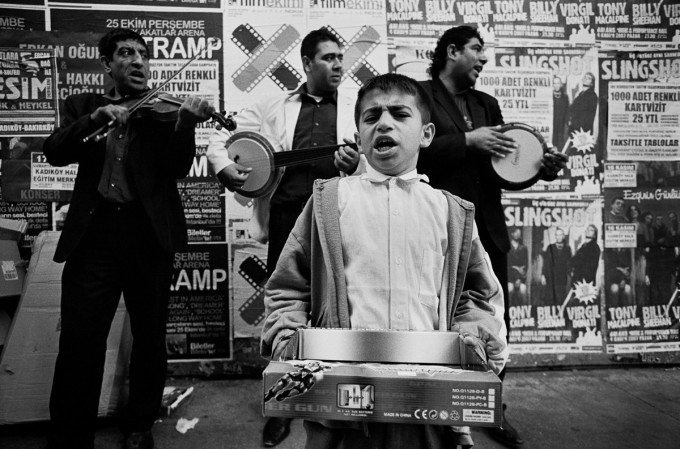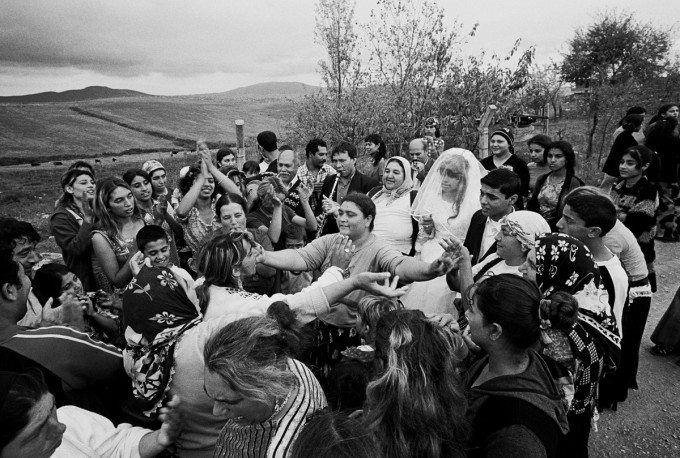
All images are copyrighted Arjen Zwart, and are being used with permission.
The music could be heard from several blocks away. It was a comfortable volume at that distance, but as we got closer, I slid two earplugs in that would serve as my saving grace. Children in mismatched clothes ran all over the side street as a tight circle of Roma men and women danced in a circle around the bride and groom. The music was a Gypsy spin on popular tunes, and it barreled out of the speakers with the intensity of a thunderstorm. The earplugs were wisely suggested by Arjen Zwart, a Dutch photographer who invited me to this brilliantly colorful and very loud ceremony of Gypsy matrimony. He had a pair of earplugs, too, that he only removed when a Roma he knew leaned in to talk with him.
The atmosphere was formal and informal. Young girls wore brightly colored dresses that trailed over the asphalt. Some of the boys sported bow ties. Others did away with ceremony entirely with T-shirts and jeans. Save for the bride and groom and those closest to them, apparel largely didn’t seem to matter.
The husband-to-be in slacks, a blazer, and an open collar shirt danced with the ease of someone who’s probably witnessed many weddings before his own. The bride in a bright pink dress and golden hair swayed and sashayed in time with her groom. The circle around them moved uniformly, changing its speed and rhythm to match each consecutive song.
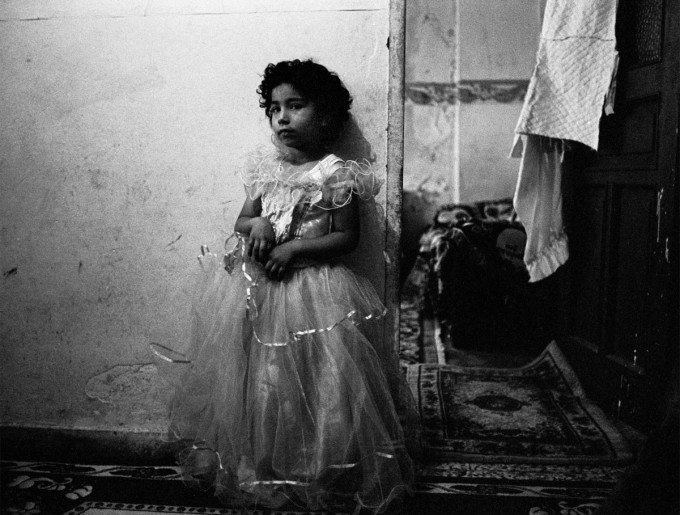
Zwart was there to continue work on a project he began 14 years ago, “No One Dies At a Gypsy Wedding.” He first encountered the Roma people in Istanbul in 2001 when he came across a young boy performing in the street with a darbuka–a type of hand drum popular in Turkey and the Middle East. Zwart saw a photograph happening before his eyes and knelt down to make it. As he did so, he saw that he had the approval of the boy’s father who sat just a short distance away. Zwart was later invited in their home, and a connection began to take shape.
When I first interviewed Zwart for a piece about staying committed to long-term projects, he said that one of the biggest problems he had was the effect his camera had.
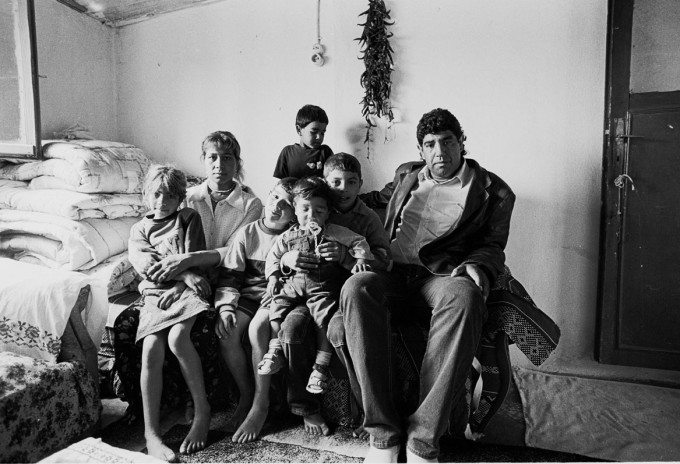
“The problem, especially in the beginning, was that everybody is so excited when you come with a camera there, that as soon as I touched my camera, everybody jumped in front of the lens,” he said.
That was largely a problem in the early years of his project, but it manifested itself again at the wedding he invited me to. Zwart urged me to be judicious about photographing kids because it could become a never-ending process of energetically posed portraits. The kids and the teenagers were the ones who were the most excited about being photographed. They would push and pull each other into and out of the frame. They’d strike poses and make faces. Then they’d rush forward, eyes pointed upwards at their visage on a small LCD screen.
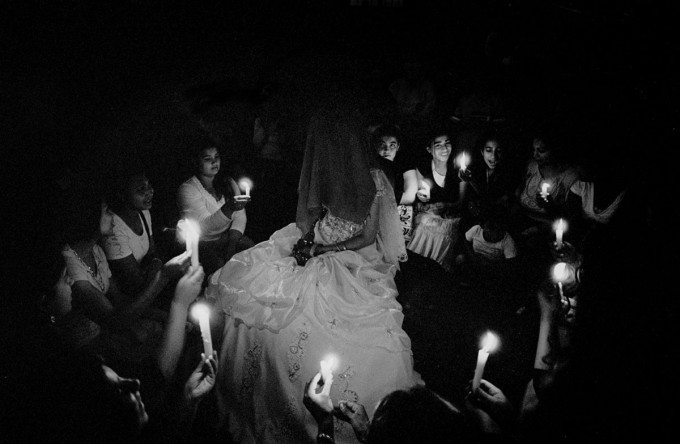
The first time I saw a wide edit of Zwart’s project was on a wall in a mutual friend’s apartment in Istanbul. He had well over 100 4×6 prints tacked up on a metal wall. It’s as much his project as it is a historical record. You could go from one image early in the sequence to another 50 or 60 images later and see the same person years apart. It was a continual process of discovery, finding similarities across the years.
“Editing is the hardest part,” Zwart said of the stage he’s in now.
His thoughts on his project have changed over time, and they have, on occasion, affected the number of images in the edit. At one point, he went from around 120 to somewhere 70, almost in one fell swoop, only to expand the edit later.
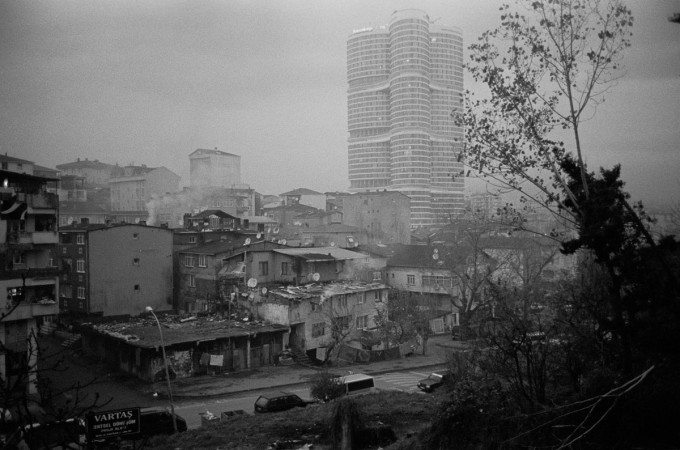
While he’s working towards the end, he still goes out to spend time with and photograph the family he’s known for 14 years. He’s witnessed the parents age and the kids mature. Some have gone off to get married and start families. He’s been there for spontaneous dance parties and quieter moments.
In that time, Zwart has changed as a photographer. His project is a fine mix of photojournalism, documentary and street photography, and by his own admission, his images have become more nuanced over time. There was a tendency in the beginning of shooting direct images, where the subject and the meaning were immediately clear. That’s changed with time as Zwart’s ideas have changed. The images from recent years are a bit more abstract than the earlier ones.
There’s a vitality that runs through all them. They show lives lived. They’re elements of a better family album than anyone could ask for, and Zwart now has the occasionally daunting task of editing it down to the right sequence of images.
It’s an ongoing process, one that can seem as endless as trying to photographing kids candidly at a Gypsy wedding.
